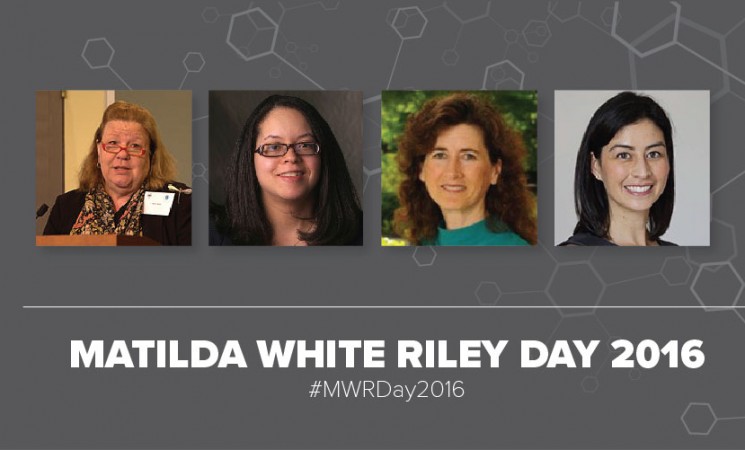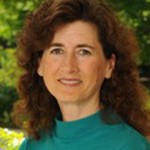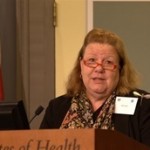Archived Content
This page is archived and provided for historical reference. The content is no longer being updated, and some of the information may have changed over time and could be outdated or inaccurate.

By Wendy Anson, Ph.D.
The 2016 Matilda White Riley Day will feature a distinguished panel of women whose research in the behavioral sciences and public health epitomize Matilda White Riley’s spirit of integrating behavioral and biological aspects of health and disease.
In 1979 at the age of 68, Dr. Matilda White Riley began a 20-year career at the NIH in which she pioneered a vision of integrating a biopsychosocial understanding of health and disease within NIH’s biological and biomedical sciences approach. Emphasizing the influence of social structures on the lives of individuals, she went on to establish an NIH grant program around social and behavioral research. From applying sophisticated sampling and survey techniques gleaned from her early sociological training, to publishing a program announcement that put “effective functioning” on an even par with the prevailing disease model weltanschauung, to chairing the far-reaching, NIH-wide Working group on health and behavior, Dr. White Riley spearheaded fresh perspectives on health and disease.
The three outstanding panelists lined up for the Women in Science: Tales and Trajectories panel of the 9th Matilda White Riley Behavioral and Social Sciences Day reflect Dr. White Riley’s encompassing perspective and contribute to further her vision.
Perceived Risk Is Shaped by Both Actual Hazard and Outrage
What’s the best way to explain complicated ideas to the public? What happens when public perception and understanding are at odds with scientific evidence? Is cognitive function the only consideration in understanding? Research shows that both cognitive and emotional factors influence an understanding of scientific concepts.
“I was originally intrigued by how you explain difficult science concepts to people,” said Katherine Rowan, Ph.D., Professor of Communications at George Mason University.
A review of the educational psychology, communications, and instructional literature showed Dr. Rowan that when we’re trying to understand why people may not understand complex ideas, we need to consider the emotional as well as the cognitive side of things.

“In 2014 the Ebola disease galvanized our attention and frightened us,” points out Dr. Rowan, who is also a Member of the George Mason Center for Health and Risk Communication. But she adds, “There were only two total U.S. Ebola deaths. Compare that to numbers of pedestrian deaths from auto accidents in the same year.”
Dr. Katherine Rowan demos #biobehavioral legacy of living and learning #MWRDay2016
“People focus more on how upsetting a risk seems to them than on how dangerous it really is,” says Dr. Rowan. “‘Risk equals hazard plus outrage,’ as Peter Sandman famously pronounced in 1993.”
Examples of discrepancies in attitudes and perceptions regarding “hard data” seem to exist all around us.
“When we look at recent trend data, we see, for example, the suicide rate going upwards for middle-aged white women in medically underserved areas. This data may run counter to common perceptions,” Dr. Rowan pointed out. “In cases like these we need to engage that cortex and think about what we can do on regional levels, the chambers of commerce, getting money to enhance lives for groups of people who lack opportunity.”
Dr. Rowan writes about effective methods for earning trust and explaining complex science. She also talks to organizations like the National Academy of Sciences and the US Environmental Protection Agency about risk and science communication.
How Behavioral Considerations Affect Mammography Rates

Felisa Gonzales, Ph.D., M.P.H., also studies behavioral aspects of public health. Dr. Gonzales is a National Cancer Institute Fellow and Matilda White Riley Day 2016 panelist.
The 2009 U.S. Preventive Services Task Force guidelines recommended biennial screening mammography for women ages 50 to 74. The guidelines made it clear that decisions about testing should take place within a comprehensive conversation between a patient and her medical provider. Considering the multiple psychosocial factors at play during patient–provider interactions, Dr. Gonzales wondered whether this recommendation would be implemented in the same way for white and non-white women.
Indeed, national records showed Dr. Gonzales that after the guidelines were issued, there was no change in number of mammograms ordered for white women ages 40 to 49, but lower numbers were ordered for non-white women of the same age. Since the Task Force released its 2009 mammography screening guidelines, however, a significant increase has been noted in screening rates for non-white women, African American women in particular.
During her fellowship at NCI, Dr. Gonzales has been conducting research on the environmental, social, and psychological factors that influence primary, secondary, and tertiary cancer prevention. She is also interested in studying health disparities in vulnerable populations.
Environmental Factors Can Promote Adverse Weight Gain
#MWRDay2016 demos #biobehavioral legacy of living and learning
Tiffany Powell-Wiley, M.D., M.P.H., Assistant Clinical Investigator at the National Heart, Lung and Blood Institute, NIH, has two interconnected research projects. She and her team use epidemiological methods and geographic information systems to understand the socioeconomic, psychosocial, and environmental factors promoting adverse weight gain and cardiovascular risk factors in multi-ethnic, population-based cohorts. In her research, Dr. Powell-Wiley considers environmental factors, which include psychosocial factors, such as perceptions of the neighborhood environment. She then translates her findings into community-based interventions focusing on at-risk populations’ weight loss barriers.
Dr. Powell-Wiley: #obesity, #biobehavioral flags #MWRDay2016
“As a clinician seeing patients over the years, particularly overweight young women who develop heart disease, I’d hear about their limited opportunities to get healthy food, or find safe areas to do physical activities,” said Dr. Powell-Wiley. “These experiences led me to look into the role of the social environment on cardiac problems.”
Right now, Dr. Powell-Wiley is working in mHealth to develop wearable physical activity monitor-based interventions.
Marin P. Allen, Ph.D., Deputy Associate Director for Communications and Public Liaison at NIH, a member of The National Academies of Sciences, Engineering and Medicine, and trailblazer on her own right, was a most suitable choice to moderate this panel. She has been involved in NIH-wide efforts in health literacy, cultural competency, behavioral research communication, women’s health, and health communication. Dr. Allen is the NIH representative to the HHS working group on health literacy and has been a repeated contributor to Healthy People efforts for 2000, 2010, and 2020 in communications, health IT, and health literacy.
About the Author
 Wendy Anson, Ph.D.
Wendy Anson, Ph.D.
Wendy Anson, Ph.D., is senior science writer/editor for the OBSSR at NIH. She has written and developed literature reviews, book chapters, reports, grant sections, curriculum and award-winning educational films in the science and social science arena for medical schools, research hospitals, educational broadcasting organizations and universities. Her Ph.D. is in educational psychology and technology.










